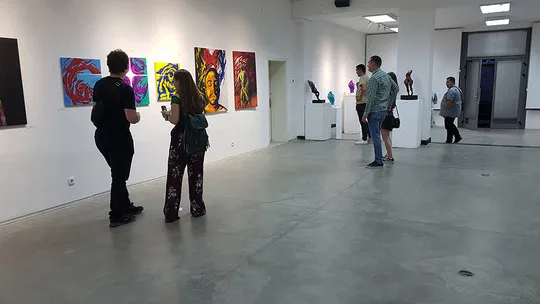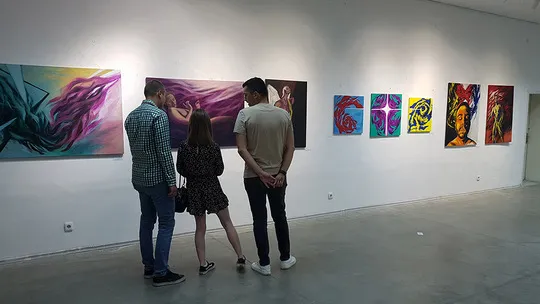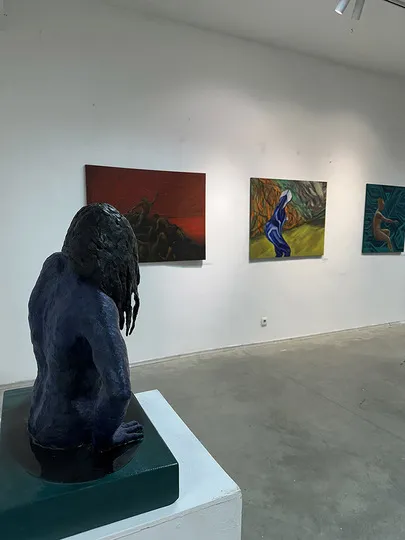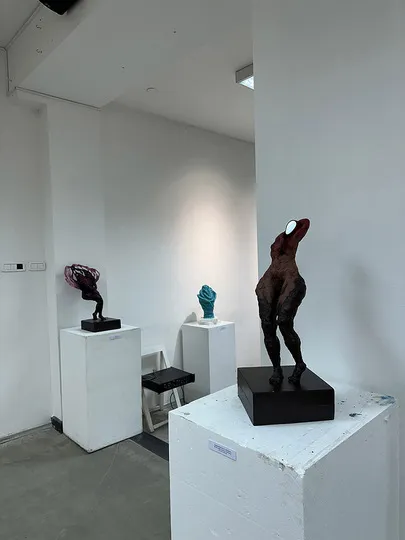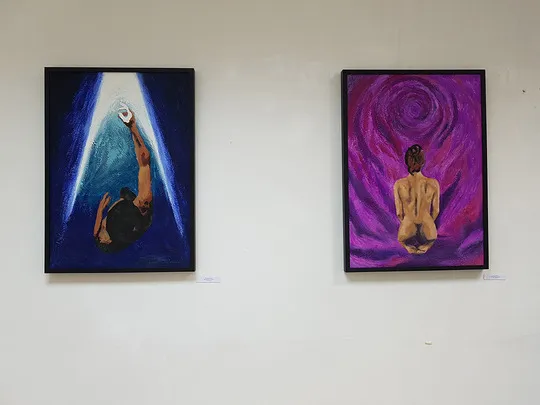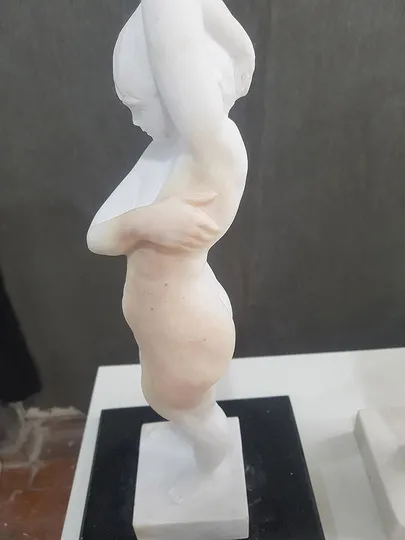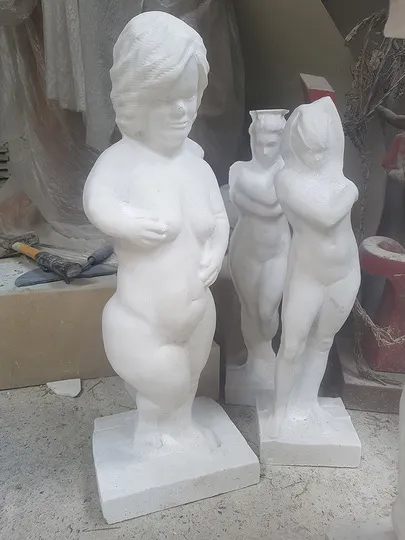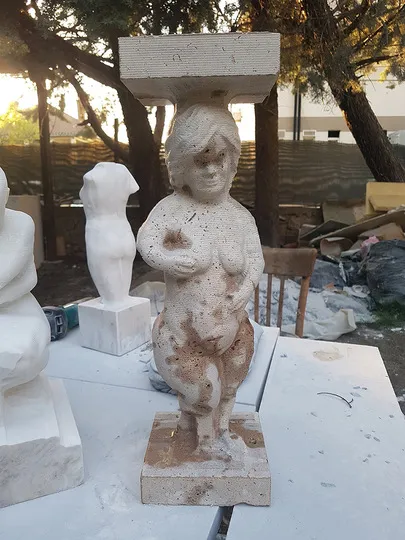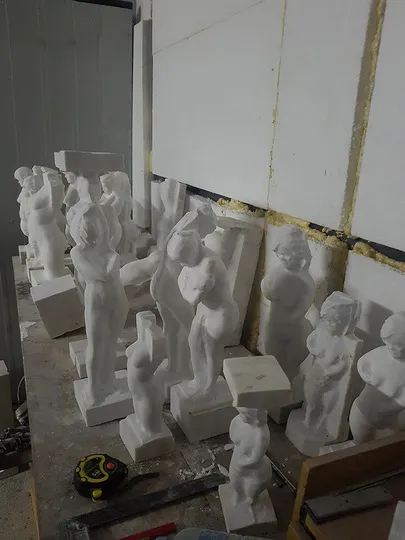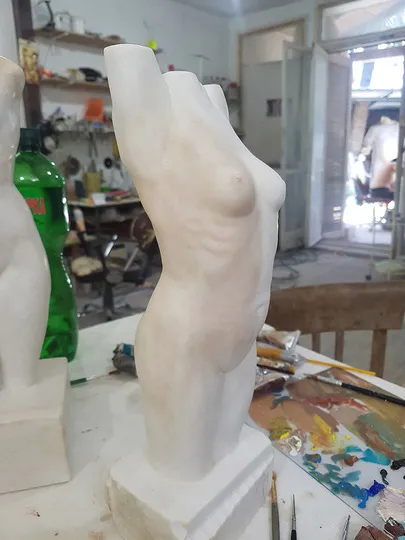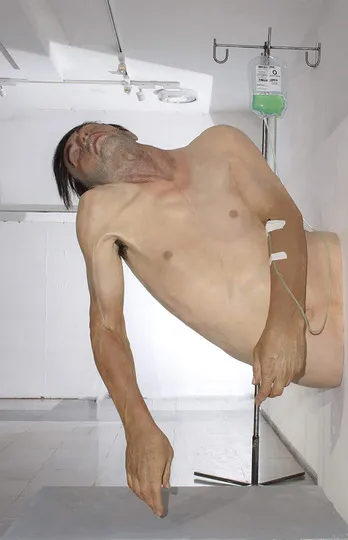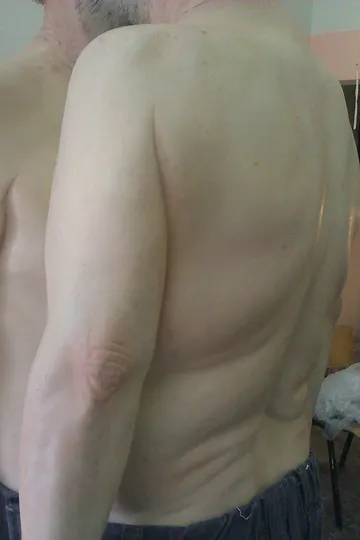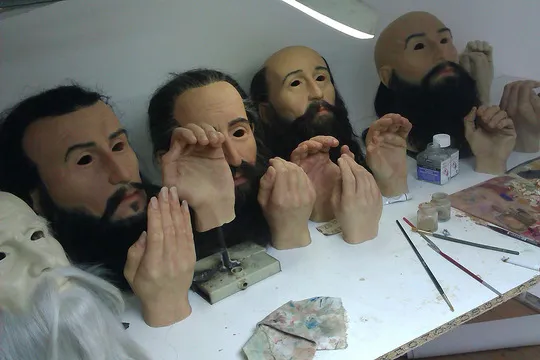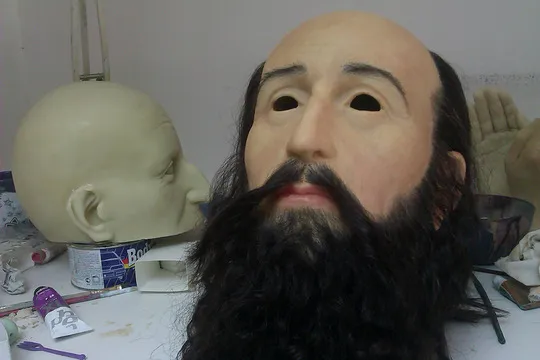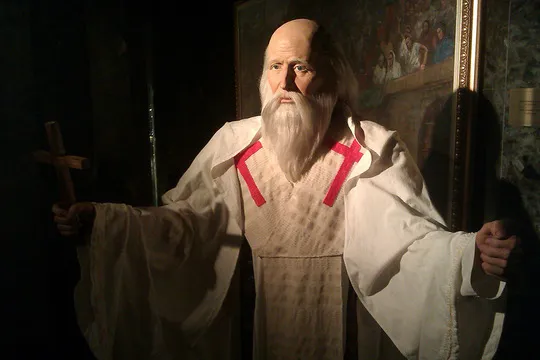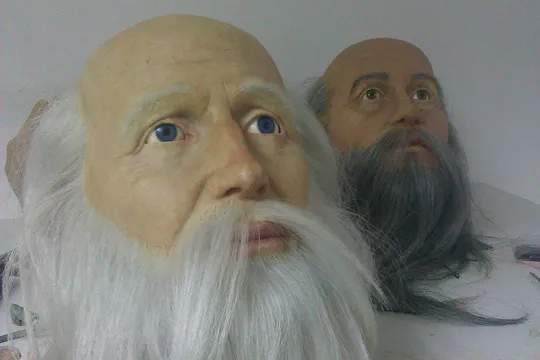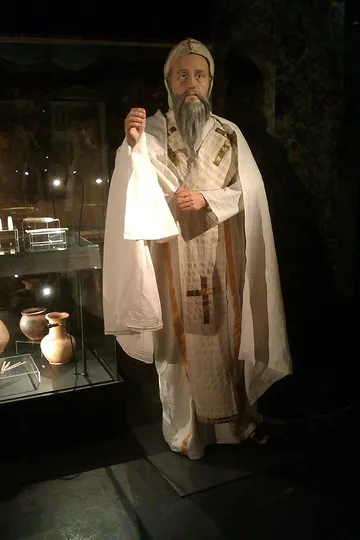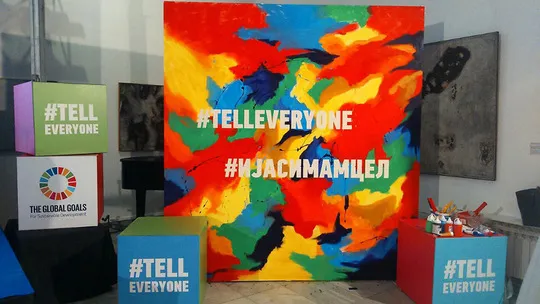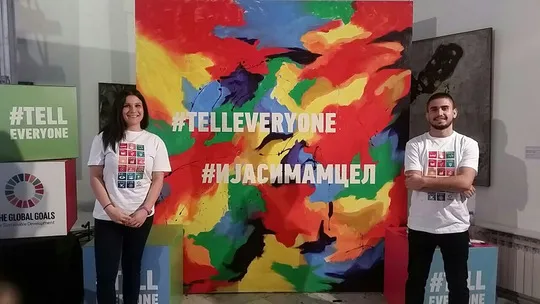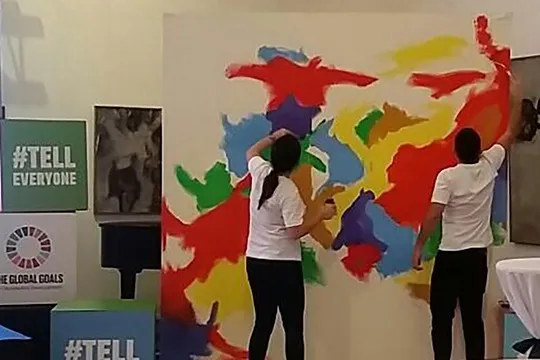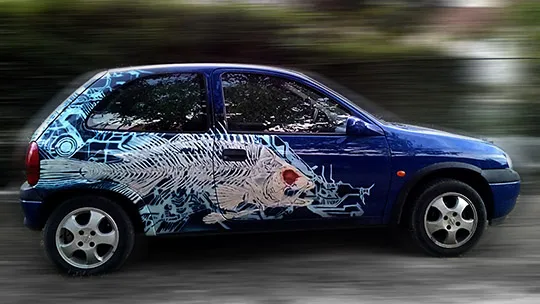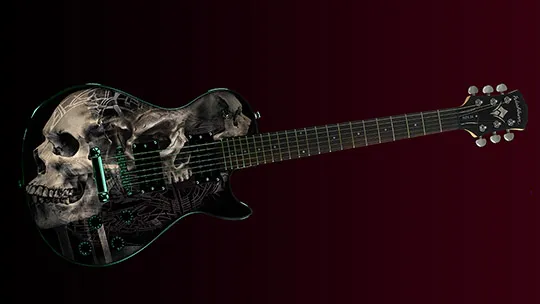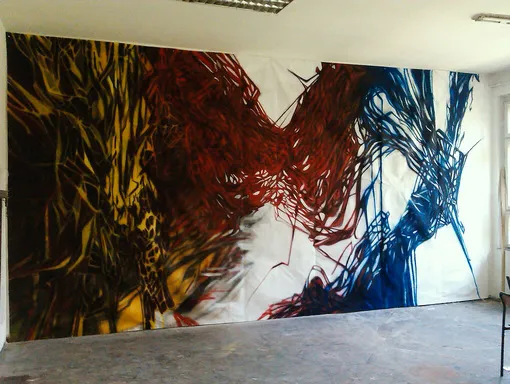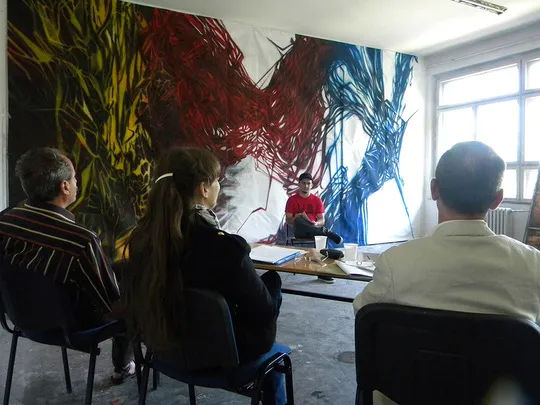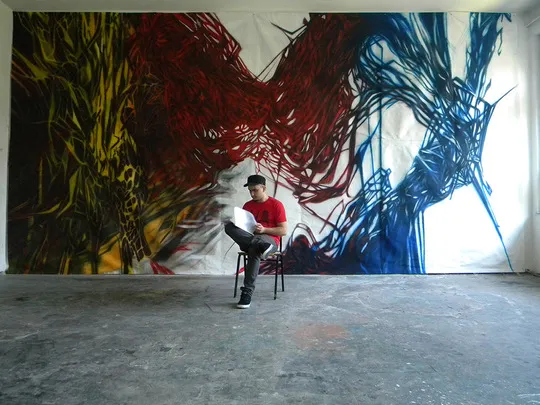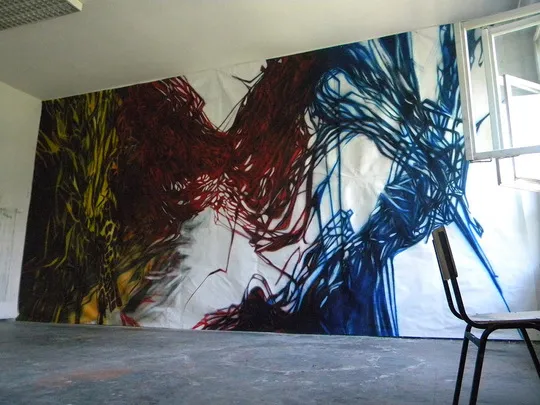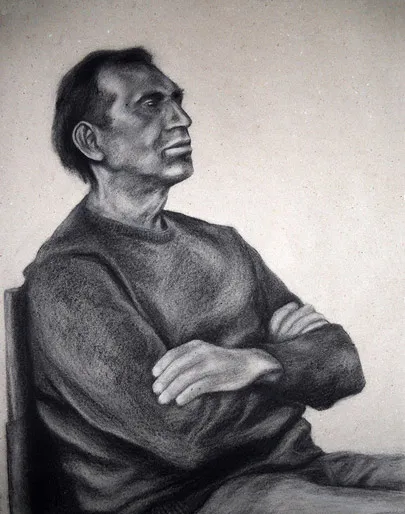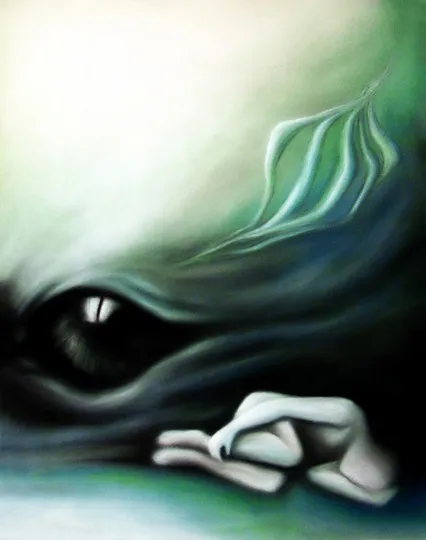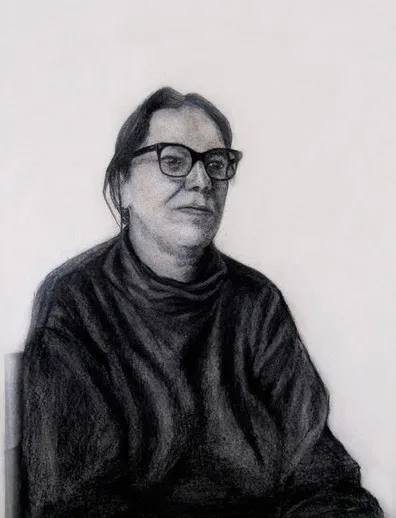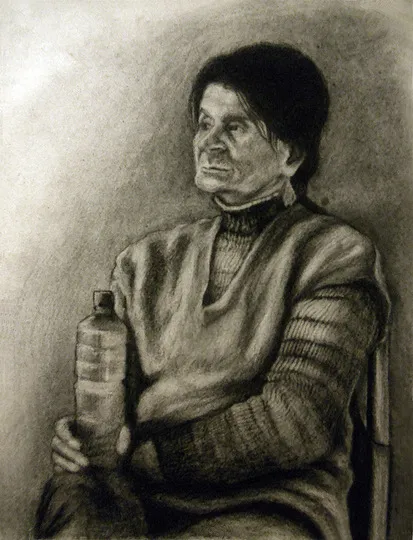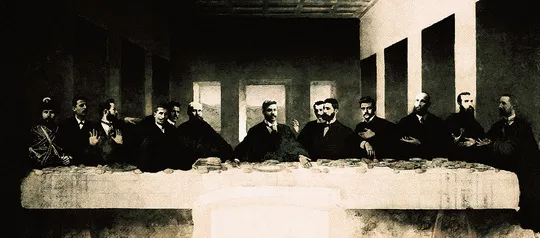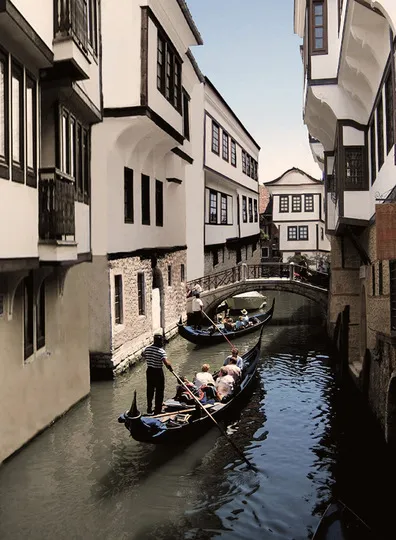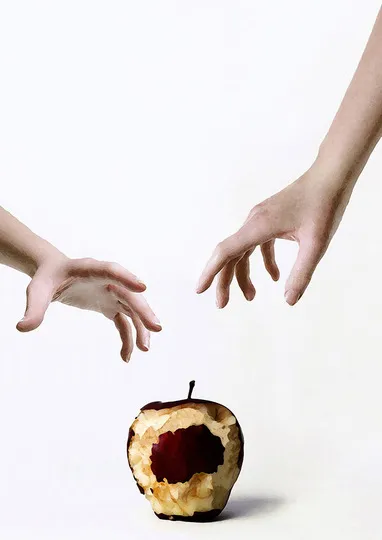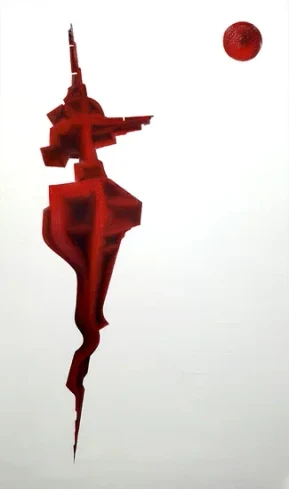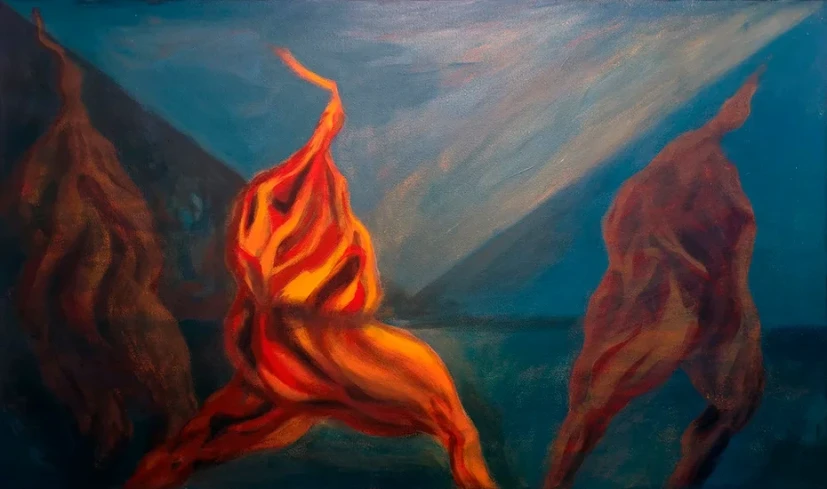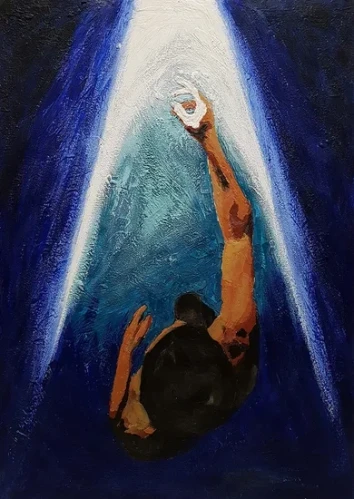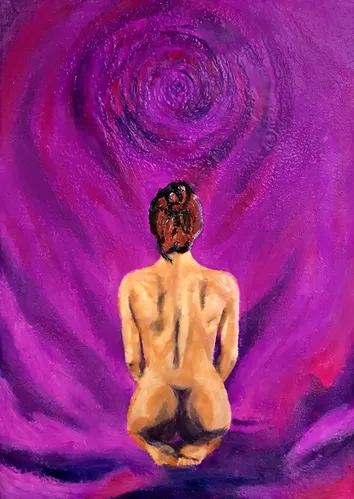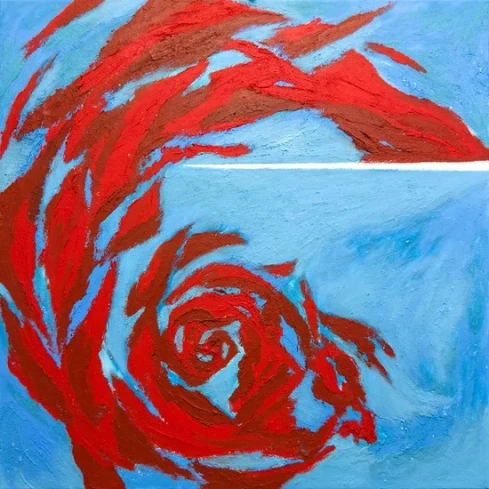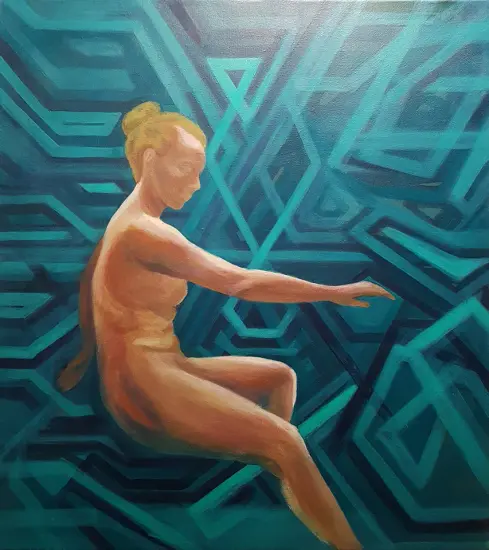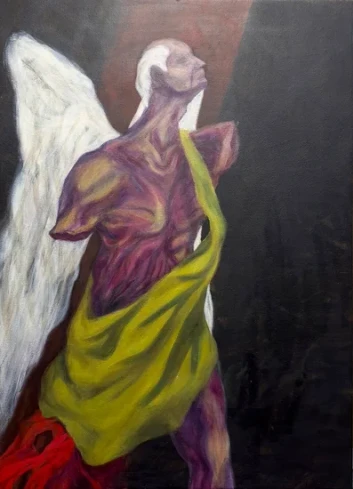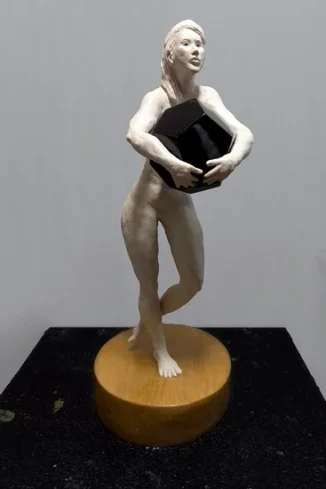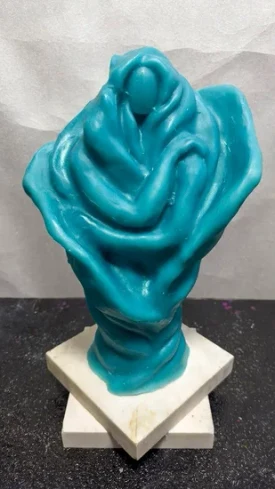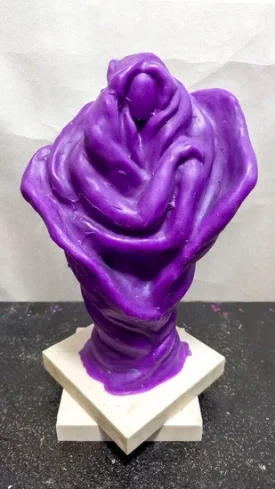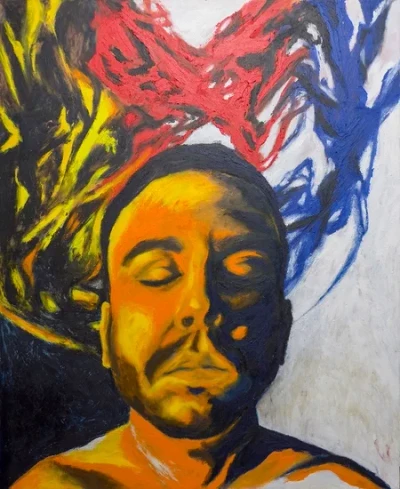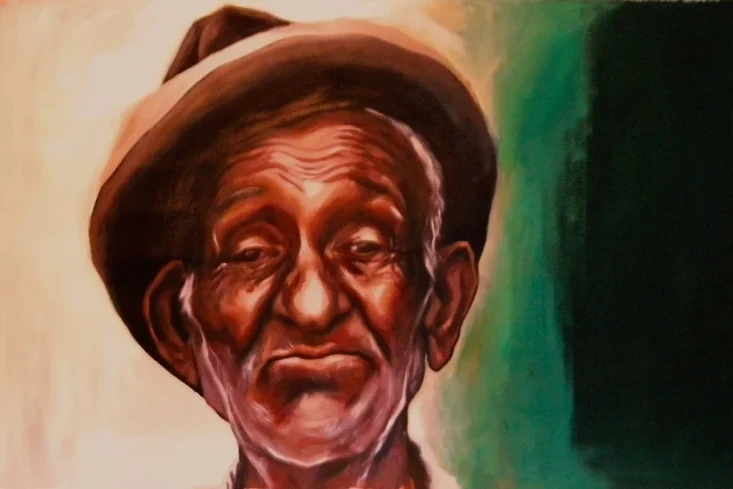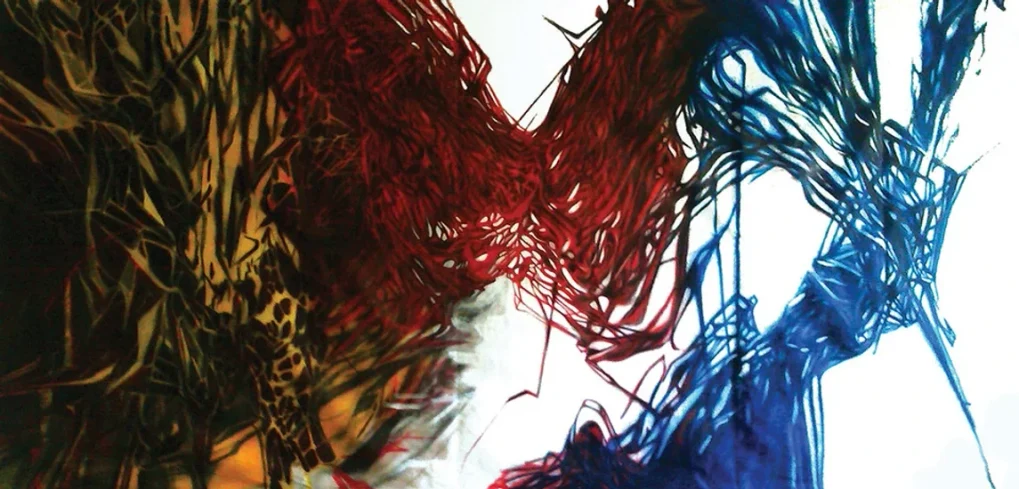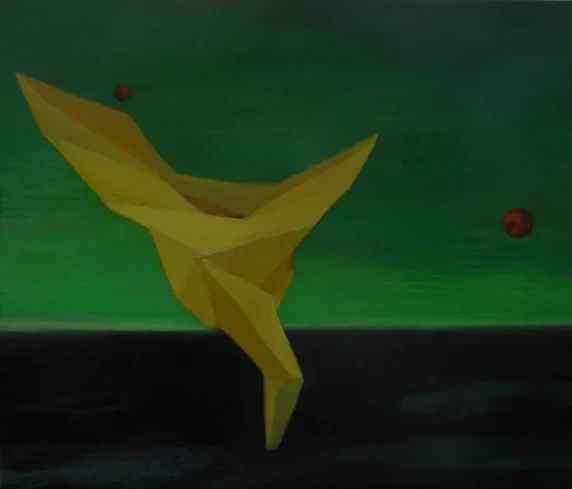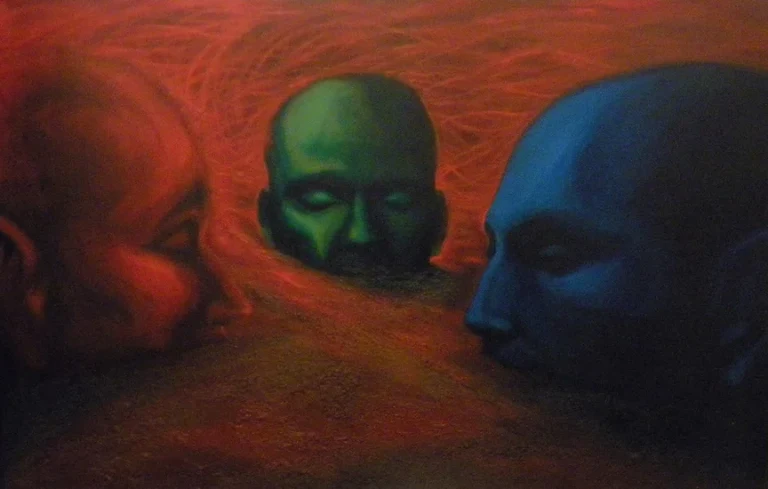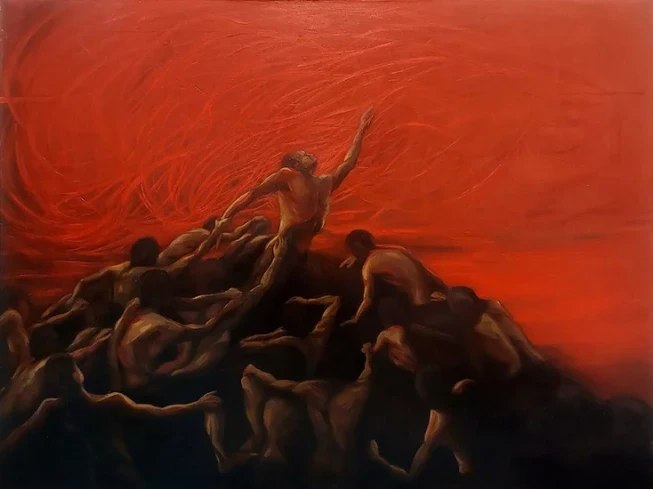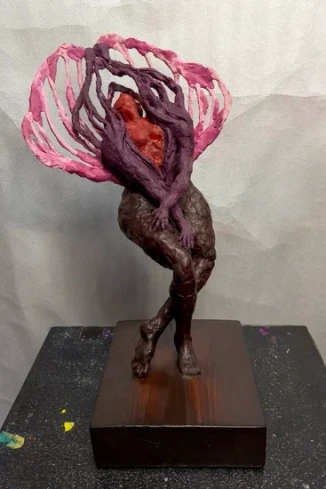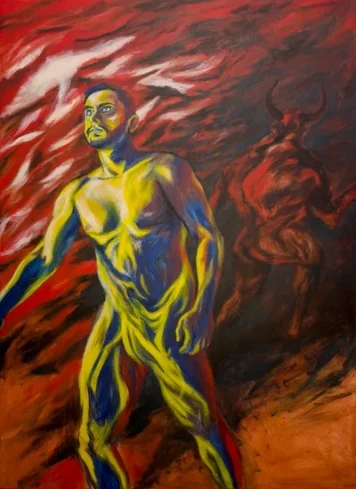
Discover My Artistic Journey at OnlyOneWayToExit
This journey is defined by exploration, discovery, and transformation—leading me into the symbolism. Most of my works are the result of ongoing research and experimentation with wax, a medium that continues to reveal new dimensions. OnlyOneWayToExit is not just a name; it’s an invitation to explore the unseen.
Encaustic painting is more than a medium—it is a vessel of permanence. The fusion of wax and pigment does not merely preserve color; it locks emotion, movement, and meaning into an unchanging state. Unlike other forms of art, it does not fade, crack, or erode with time. It remains forever intact.
Below, you will discover the events that brought me here. Follow my path and uncover a unique artwork that speaks to you. Your home will be enhanced with a piece that embodies history, artistry, and passion.
Obtained a Master's degree from Faculty of Fine Arts - Skopje
Continuing my artistic journey, my master’s studies provided an opportunity to further refine my techniques, concepts, and creative approach. Unlike my undergraduate years, where experimentation was my main driving force, this phase was marked by a more focused and structured exploration of my ideas, leading to a deeper engagement with both theoretical and practical aspects of art.
For my master’s thesis, I chose the title "Somewhere In Between", which reflects my artistic positioning between theory and technique, the physical and the metaphysical, the tangible and the intangible. This concept allowed me to bridge traditional craftsmanship with contemporary perspectives, creating works that resonate both symbolically and materially.
Through my research and practice, I sought to deepen my understanding of materials and processes, pushing the boundaries of encaustic painting, wax techniques, and sculptural treatments. My goal was to revisit and reinterpret ancient artistic methods while refining them through a more academic and technical lens.
Beyond the technical aspects, my master's thesis was also an introspective process, allowing me to further explore themes that have always fascinated me—the connection between time, memory, and artistic expression. My research into symbolism and allegory, influenced by thinkers such as Ernst Cassirer, Susanne Langer, and Pavel Florensky, provided a theoretical framework that supported the conceptual depth of my work.
This period of study reinforced my commitment to lifelong learning and artistic discovery, setting the foundation for my future projects and research. It was not just an academic milestone, but a transformative experience that continues to shape and influence my artistic practice today. My thesis reaffirmed my belief that art exists as a bridge between the seen and unseen, tradition and innovation—always somewhere in between.
Working with marble and painting in the manner of the ancients
After some time, I once again found myself immersed in an entirely new challenge—the mechanical processing of natural stone. This required me to delve into the programming of CNC router machines, preparing 3D models to be carved with precision and accuracy.
This experience greatly expanded my understanding of machine-assisted sculpting, where I worked on refining scanned models, making crucial manual adjustments to ensure that every final sculpture preserved all intricate details. The process proved to be highly successful, leading to the creation of dozens of sculptures in a short period.
At this point, my research into wax and ancient artistic techniques resurfaced. Knowing from historical sources that classical sculptors practiced polychromy, I began studying ancient recipes for pigments and binders used in sculpture painting. My goal was to uncover the original methods of surface treatment, bridging the gap between traditional craftsmanship and contemporary technology.
This combination of modern CNC machining and ancient painting techniques became a fascinating exploration, proving that even in today’s world, the wisdom of the past can still be revived and reinterpreted in new ways.
Airbrushing Hyperrealistic Sculptures
My journey with airbrush techniques took an exciting turn when I began collaborating with Professor Zharko Basheski on his hyperrealistic sculptures. His works, known for their remarkable detail and life-like presence, required a meticulous approach to surface treatment, where every subtle nuance of human skin had to be carefully recreated.
My role in this process was to apply layers of color and texture using an airbrush, bringing the sculptures to life with precision. Unlike traditional painting, where brush strokes are visible, airbrushing allows for the seamless blending of tones, capturing the complexity of skin translucency, veins, pores, and subtle variations in pigmentation.
Working on these sculptures was a demanding yet rewarding experience. It required a deep understanding of color theory, layering, and control over airbrush techniques to achieve the most natural effect possible. Every sculpture was a challenge on its own, pushing me to refine my approach with each new piece.
This experience not only enhanced my technical skills but also gave me a profound appreciation for the intricacies of hyperrealistic art. It reinforced my belief that attention to the finest details is what truly separates ordinary work from extraordinary craftsmanship.
Working with Wax
After completing my undergraduate studies, my airbrush work led me to an exciting collaboration with Professor Zharko Basheski, a renowned artist in the field of hyperrealistic sculpture. Working alongside him on several of his sculptures, I was eventually introduced to a new challenge—wax figures.
While Basheski was responsible for sculpting the forms, my role was independent—I handled the creation and finalization of the figures. Unlike his previous sculptures, which were airbrush-coated rather than traditionally painted, these new figures required a more authentic approach, akin to the craftsmanship of Madame Tussauds and other master wax figure creators.
Driven by curiosity, I delved into researching wax as an artistic material. Unlike industrial paraffin-based waxes, the finest wax figures are cast in pure, light beeswax, a technique rarely documented in detail. Despite the limited resources available, I managed to develop a process that allowed me to successfully cast and paint a dozen wax figures as part of a collaborative team.
This experience was more than just a technical challenge—it was a reconnection with past knowledge and a deep exploration into the craftsmanship behind realistic figure-making.. Once again, I found myself immersed in experimentation, pushing my artistic boundaries further than ever before.
UNDP Global Goals
Pushing past creative boundaries once again, I found myself stepping out of my comfort zone for yet another unforgettable experience. Alongside a close colleague from my university days, I was invited—through her friend from the organizing team—to take part in the Macedonian event for the Global Goals, organized by UNDP Macedonia.
Our task was to create a live painting performance during the cocktail reception. This was unlike anything I had ever done before. It was the first time I painted in front of a large audience, fully aware that every stroke, every decision, was being watched in real-time.
This experience challenged me in new ways, pushing me beyond my own limits. It was a moment of creative liberation—an opportunity to break through yet another imaginary barrier. Though it remains a unique event in my artistic journey, it left a lasting impact, reinforcing my belief that true growth comes from embracing the unfamiliar.
Airbrushing
Around the time I was preparing for my final exam, I began experimenting with airbrushing. After taking a short break from the intense creative process of my graduation project, I felt a shift in my perspective. I decided to step back for a moment and explore something entirely new.
A friend of mine was planning to order an airbrush from abroad, as it was not readily available in our country. At the same time, by sheer coincidence, my father bought me my first car—though it was damaged. Without any prior experience or preparation, I saw this as an opportunity to step out of my comfort zone. I decided to create something unconventional, knowing that whatever I painted would be seen by many people as I drove around the city. It was, in a sense, a moving symbolic artwork.
Through this piece, I wanted to challenge people to break free from rigid perceptions of art—to realize that things are not always as they appear at first glance. Sometimes, the symbol itself is the message.
With no previous experience in airbrushing, I successfully completed my first piece, embracing the challenge and enjoying the creative freedom it brought. That first project led to several more—both for myself and for close friends—marking the beginning of an exciting new artistic journey.
Graduated Faculty of Fine Arts - Skopje
A year after completing my exams, the time for my final graduation project arrived. Sometimes, circumstances compel us to step away from the familiar, to explore the other side of our consciousness, to immerse ourselves in the unconscious, allowing the forces of the subconscious to guide us.
While creating my final work, I sought to transfer my own energy onto the canvas—defining its shape and boundaries, giving it direction through the illusion of movement. I traced the pulse that vibrated through space, struggling against the invisible barriers it encountered. These barriers, though unseen, influenced its form, making it ever-changing—just like the physical forces of gravity or radiation, which we cannot see, yet undeniably feel.
The sheer scale of the canvas presented a challenge. Enclosed on three sides by the painting itself, I found myself physically immersed in the process. This created a moment of deep intimacy—moving across the surface, I was not just painting but inhabiting the work. My focus narrowed to the immediate sphere of activity, and as I surrendered to the movement, my body gradually shifted into a state of pure automatism, where instinct took over, and I followed the creative impulse without restraint.
At the same time, the act of creation became a form of emotional release—a direct confrontation with myself. Guided by instinct, I moved across the surface, splattering paint, letting the work emerge organically. This experience was unlike anything I had done before, opening the door to new possibilities and methods that I am eager to explore in the future.
Began studies at the Faculty of Fine Arts - Skopje in 2010
After graduating high school and enjoying a wonderful summer, I was accepted into the Fine Arts Academy on a state scholarship. Though I had already developed my own artistic vision and conceptual approach, my student years became a time of mastering academic techniques and refining my technical skills.
From my very first year, I fully immersed myself in the learning process. In a short time, the gaps in my knowledge—especially those stemming from not having attended a specialized art high school—gradually disappeared. By my second year, I had mastered the techniques of mimetic drawing and painting, something I had never practiced before. Until then, my artistic approach had always been rooted in imagination and symbolism, using forms to crystallize an idea rather than strictly replicating reality.
Although I had experimented with oil painting before—creating three pieces during high school—I lacked formal guidance in the technique. My learning process was shaped by both my own trial and error and observing the mistakes of my peers. My entire student period was marked by experimentation. I never stayed too long within a single framework; instead, I constantly explored both new motifs and techniques.
This drive for discovery led me to revive certain long-forgotten artistic methods. One of my most exciting findings was painting with decomposed wax as a medium. I was captivated by its unique qualities—the process itself revealed a depth of beauty and sensitivity that resonated deeply with me. As night fell on my undergraduate studies, I knew my explorations were far from over. My journey would continue into my master’s studies, where I would push these discoveries even further.
Signed Contract with Daily Newspaper Nova Makedonija 2010
In 2010, the oldest daily newspaper in Macedonia published one of my illustrations in one of their editions. Just after turning 18, I was invited for a meeting, and we agreed to sign a collaboration contract. The illustration they noticed was something I had created at 17—a reflection of my deep passion for creative expression, which I had nurtured on my own since early childhood, without guidance or encouragement from others.
Mastering my craft was a solitary journey, but it quickly bore fruit as soon as I reached adulthood. Though the collaboration wasn’t particularly long-lasting due to my academic and personal commitments, it fueled my determination to continue refining my skills and exploring artistic expression in its many forms.

